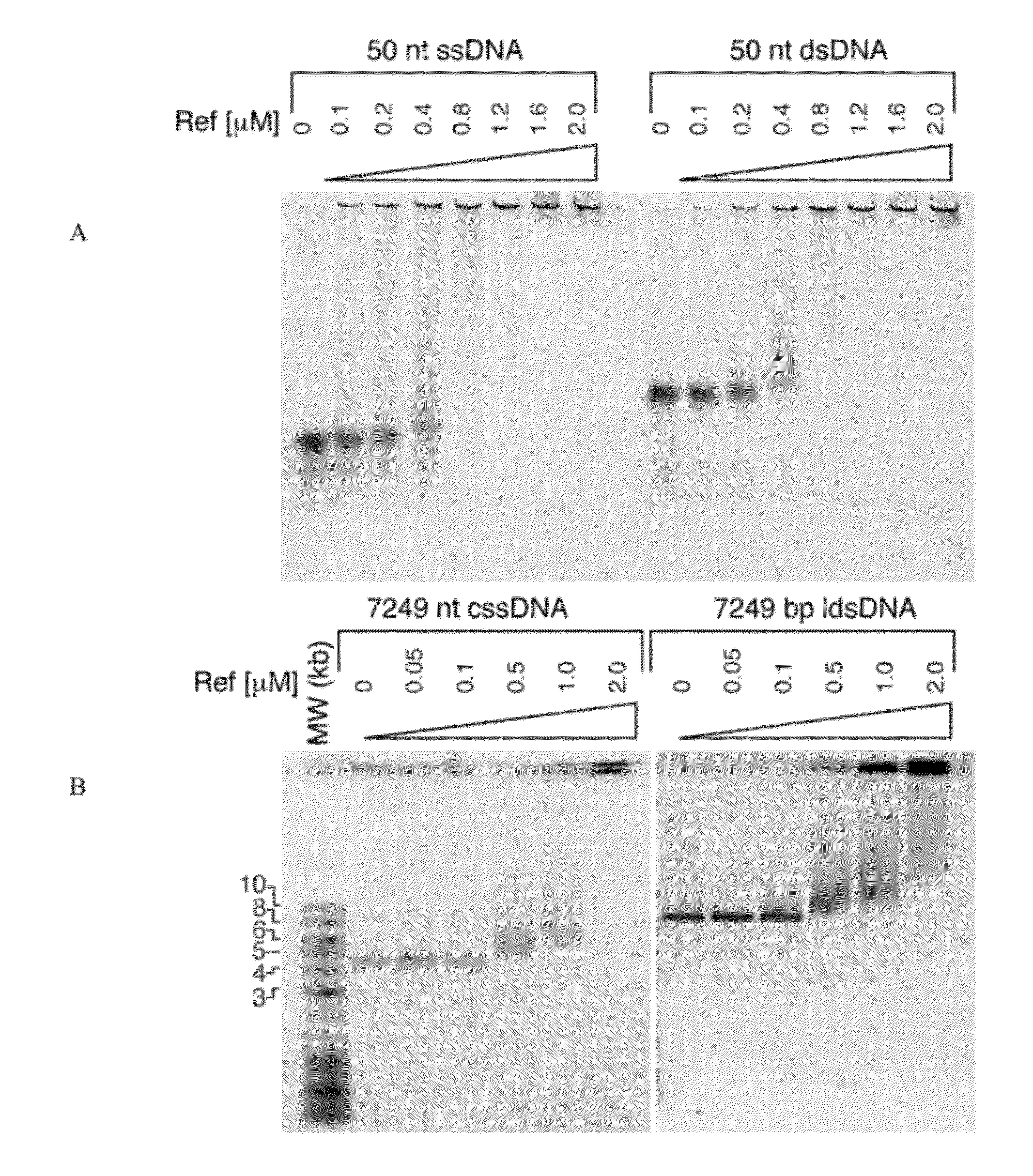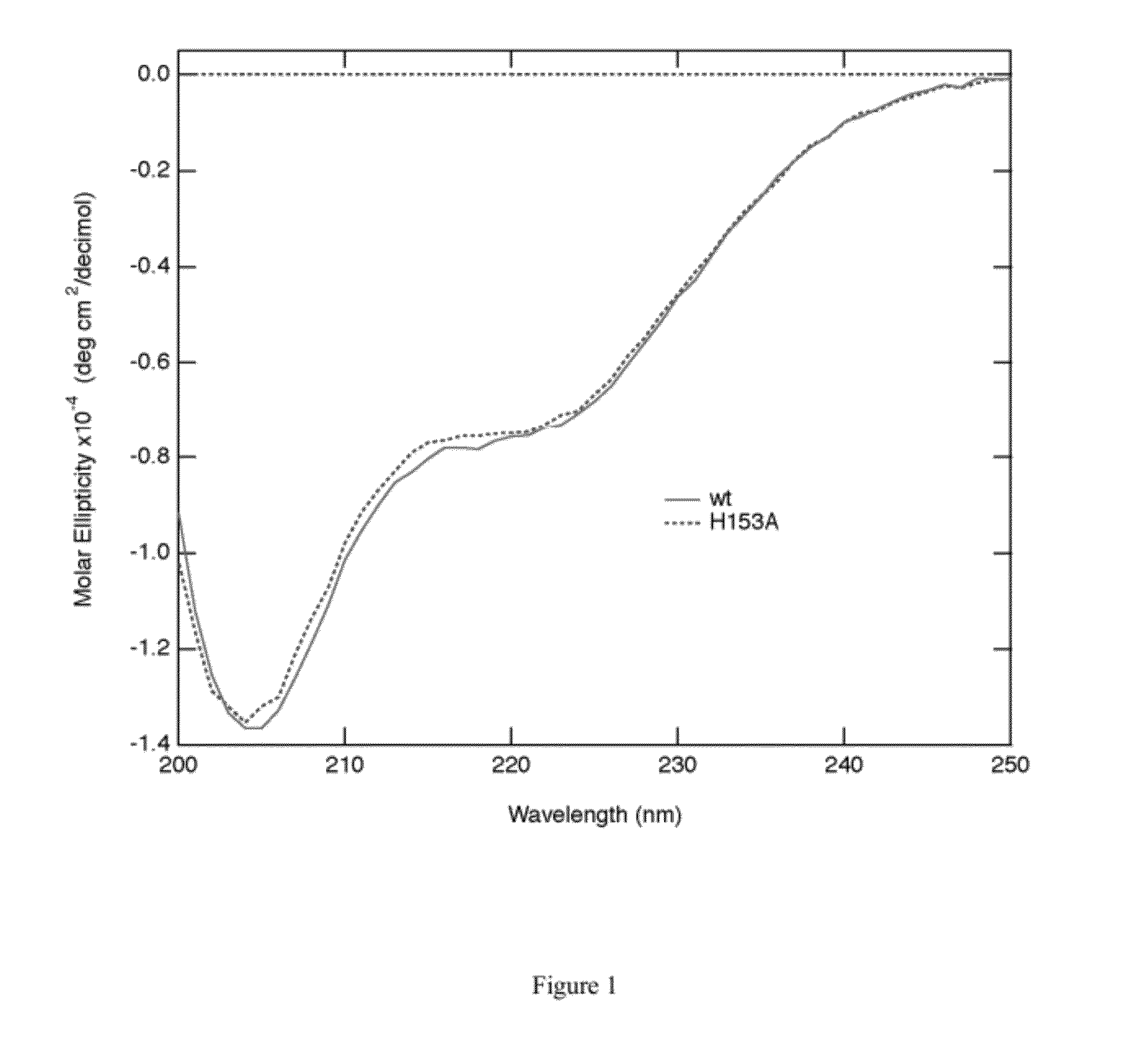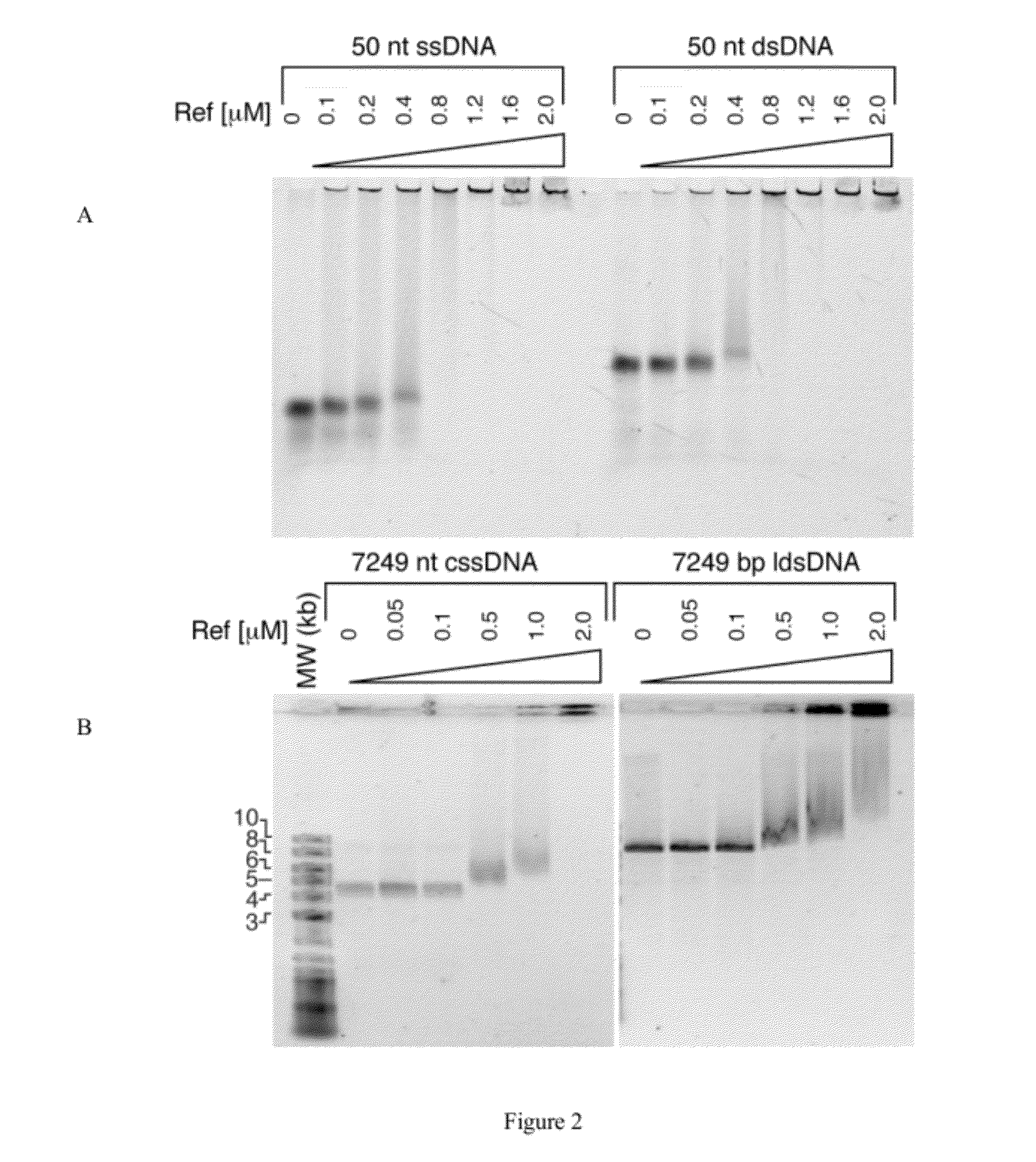Method for using ref protein as a targeted reca-dependent nuclease
- Summary
- Abstract
- Description
- Claims
- Application Information
AI Technical Summary
Benefits of technology
Problems solved by technology
Method used
Image
Examples
example 1
Demonstration of Targeted Co-Nuclease Function for Reca Recombinase with the Bacteriophage P1 Ref Protein
A. Summary
[0064]A universal restriction enzyme that could promote specific DNA cleavage at any desired DNA sequence would find a wide array of applications in biotechnology, but no precedent for such an enzyme exists. In this example, we demonstrate that the bacteriophage P1-encoded Ref protein functions as a RecA-dependent nuclease. RecA protein filaments are used to activate a latent nuclease function in Ref. With single-stranded DNA substrates, RecA filament-activated Ref catalyzes large-scale DNA degradation. In long duplex DNA, Ref nuclease activity can be localized to RecA-containing D-loops.
[0065]The crystal structure of Ref provides evidence that Ref is a member of a new sub-class of HNH-family nucleases. The core nuclease fold lacks apparent DNA-binding elements found in other HNH enzymes and suggests that interaction between RecA and Ref facilitates Ref activation. Usin...
example 2
Improved Sequence-Targeted Endonuclease System (Prophetic)
[0108]The efficiency of the disclosed method is limited by the equilibrium dissociation (and rebinding) of the single-stranded DNA targeting fragment from the nucleoprotein filament of the RecA protein. In this prophetic example, we propose stabilizing the nucleoprotein filament to improve the efficiency of the nuclease activity of the disclosed system. The targeting DNA strand may be covalently linked, at its 5′ end, to an engineered variant of RecA protein that includes six RecA subunits covalently linked together so as to form a permanent nucleation site. The covalently-linked RecA hexamer will effectively stabilize the nucleoprotein filament, and will provide a more efficient targeted endonuclease when contacted with Ref All publications, patents, and nucleotide and peptide sequences mentioned herein are hereby incorporated by reference in their entirety as if each individual publication or patent was specifically and ind...
PUM
| Property | Measurement | Unit |
|---|---|---|
| Digital information | aaaaa | aaaaa |
| Molar density | aaaaa | aaaaa |
| Molar density | aaaaa | aaaaa |
Abstract
Description
Claims
Application Information
 Login to View More
Login to View More - R&D
- Intellectual Property
- Life Sciences
- Materials
- Tech Scout
- Unparalleled Data Quality
- Higher Quality Content
- 60% Fewer Hallucinations
Browse by: Latest US Patents, China's latest patents, Technical Efficacy Thesaurus, Application Domain, Technology Topic, Popular Technical Reports.
© 2025 PatSnap. All rights reserved.Legal|Privacy policy|Modern Slavery Act Transparency Statement|Sitemap|About US| Contact US: help@patsnap.com



